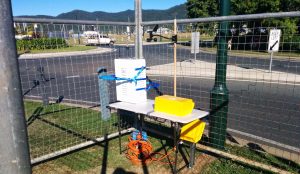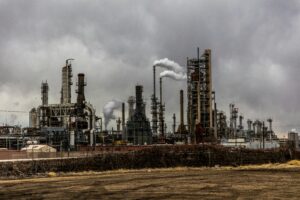Scientific rigour and commercial application
Trinity Consultants Australia is committed to innovating and driving best practice outcomes in all of its services. Supplementing our day-to-day projects, we conduct formal research studies across our air, noise, water and lighting disciplines.
Many of our highly qualified scientists and engineers have been published nationally and internationally in their fields of expertise, and our research has been recognised by leading industry award programs.
Attendance at technical conferences is a key component of Trinity’s professional development structure, and our staff have opportunities to present their papers and research at conferences and a range of other forums. Industry and peer collaboration and knowledge-sharing for the benefit of all is greatly encouraged.
Our focus
We believe high quality, evidence-based research is the most powerful way to advance environmental, social and economic development goals to build a sustainable future for everyone, for the long term.
We also strongly support real-world investigations that deliver answers and solutions for real-world challenges.
And that’s what you will find in our research and papers: expert scientific analysis, applied to common scenarios that have genuine impact upon all sorts of businesses and individuals in the real world.
In particular, our research focuses on producing:
- Replicable methodologies
- Practical and actionable insights
- Targeted recommendations
- Clear conclusions that can inform decision making.
Our papers
We have produced numerous papers on our research and studies. Abstracts and researcher details for the most recent papers can be found below.

Correlation of Traffic Noise Parameters in Queensland
The current available approaches for predicting road traffic noise level indicators rely solely on Linear Regression models that use either LA10(18H) or LA10(1H) as an input variable. This paper extends the prediction scope of regression models to include important indicators and additional road traffic factors as input variables and compares the performance of several machine learning regression methods.

Noise Management Strategies: Large-Scale BESS Projects in Australia
This study reviews effective strategies, beyond traditional barriers, and underscores the importance of strategic planning and innovative noise mitigation to facilitate the sustainable growth of BESS projects in Australia.

Outdoor Event Noise Monitoring – Lessons Learnt and Recommendations for Future Events
This paper reviews 13 years of experience and more than 200 outdoor concert events and festivals, in the capacity of noise monitoring and live management, and discusses the insights gained regarding the interpretation of noise criteria and ability to achieve practical outcomes.

An assessment of the effectiveness of acoustic treatments for balconies and open spaces…
This study examines the effectiveness of acoustic treatments required to fulfill “Queensland State Assessment and Referral Agency (SARA)” conditions for balconies or private open spaces in apartment units above the ground floor.

Evaluation of an urban tram noise impact: A mapping study in the Golden Horn
This study aims to investigate the noise exposure and potential sleep disturbance in settlements near the Eminönü-Alibeyköy tram line, including the impact of possible nighttime tram operations to address emerging public demand in the historical Golden Horn region.

Development of a venting management procedure for container fumigation operations
Container fumigation is frequently undertaken for quarantine and pre-shipment purposes. The process ensures that a commodity is free from pest and disease prior to export or import. Due to the hazardous nature of the chemicals used (such as methyl bromide and phosphine), physical air emission controls such as carbon filtration are required to minimise air quality impacts.

Comparison of two prognostic meteorological models, WRF and TAPM, for Brisbane
While employing TAPM produced prognostic data, it is critical to assimilate weather station observational data for dispersion modelling. This paper presents prognostic modelling method and results using both the TAPM and the WRF models for the northern and inner suburbs of Brisbane, Queensland.

Health risk assessment methodology and environmental justice analysis using HHRAP
This study examines the utility of one HHRA methodology, the U.S. EPA Human Health Risk Assessment Protocol (HHRAP). It builds on a previous paper which evaluated the HARP risk assessment tool for similar purposes. HHRAP was developed by U.S. EPA to provide a means of simulating the risk caused by multi-pathway (air, soil, water, food, etc.) exposure to more than 200 air pollutants.

Measurement of fugitive emission capture efficiency
Fugitive emissions of odour and other pollutants from inside structures provide many challenges for monitoring, modelling and control. This paper presents an example assessment of effectiveness of capture inside a structure containing liquid waste.

Should back-yard firepits be allowed?
This study analyses the various fire pit regulations in Southeast Queensland’s local government areas, and examines potential impacts of fire pits compared to other sources of smoke from wood combustion.
Want to know more?
If you would like to enquire about any of our projects, or discuss partnering with us to deliver high quality research for your industry or organisation, please get in touch.

